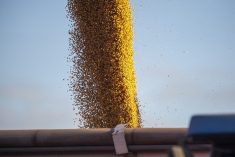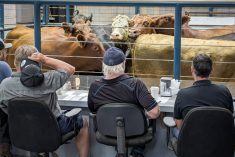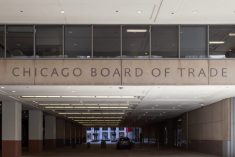Southern Alberta feeder cattle prices were steady to $2 higher on average last week. However, the market was uneven in other areas of Western Canada, trading steady to $3 per hundredweight (cwt) lower. The yearling run is coming to a close as feedlots step forward more aggressively for weaned calves.
Despite the softer futures for live and feeder cattle, the cash market has shown remarkable resistance due to positive U.S. economic data. XL Foods has resumed operations at Brooks, Alta., which has been an encouraging signal from a psychological standpoint.
Read Also

Brazil to reap record soy crop in 2025/2026, increase exports
Brazil’s Conab said the country will reap a record soybean crop of 177.6 million tons in the 2025/2026 harvest year, according to data released on Thursday.
A pre-sort sale in southern Alberta saw medium frame red steers weighing 507 pounds sell for 169/cwt; Simmental steers weighing 657 lbs. sold for $144/cwt; black Angus cross steers weighing 758 lbs. sold for $142/cwt. In central Alberta a small group of Charolais cross heifers weighing 566 lbs. traded for $150/cwt. A small group of exotic steers weighing 812 lbs. sold for $137/cwt. Alberta packers bought fed cattle at $110/cwt last week, up $2 from seven days earlier. U.S. wholesale beef prices are trading near historical highs and the Canadian dollar has weakened by three per cent since the peak in September.
Feedlots are strained under the current feeding economics, with break-even prices for cattle in the feedlot above $120/cwt. Barley values continue to ratchet higher, reaching $182/cwt, and there is no signal this domestic feed grain rally is over. Feeding operators are factoring in higher input costs over the winter. The first bout of adverse wintry weather usually results in softer feeder cattle prices as buyers factor in higher deathloss. Avoid marketing during the first wet snowfall of the season because feedlot operators discount calves that have to travel over five to six hours before reaching their final home.
Packers and grocers are gearing up for the U.S. Thanksgiving weekend. In addition to the stronger seasonal beef demand, U.S. consumer confidence rose to a five-year high, reaching 82.6; a number near or above 90 reflects expansionary consumer spending patterns and is positive for beef consumption, longer-term.
The feeder cattle market could be quite volatile until the outcome of the U.S. election is determined. Consumers’ behaviour can be erratic if the tide of the economy looks uncertain. Negative feeding margins and rising barley prices will limit the upside in the feeder market over the next month.














